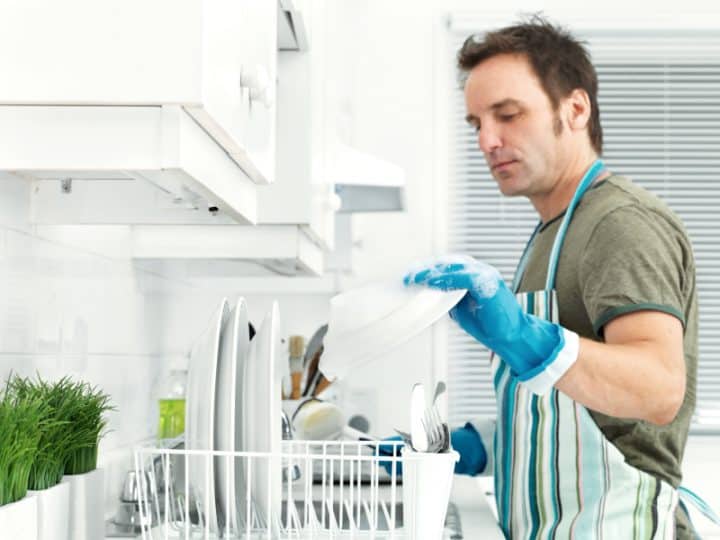Knowing how to use the dishwasher correctly, you can avoid problems and significantly extend the period of its operation.
Installation and preparation for work
The installation is best to be trusted to qualified specialists. As soon as the machine is connected, we recommend that you test it without loading the dishes. This will reveal possible flaws in the installation of the device, and at the same time, the inside of the machine will be washed away from dust, oil residues and other dirt. Also, find more useful tips about dishwashers here.
Loading dishes into the dishwasher
The quality of the final result depends on how you place the dishes in the baskets of the machine. Firstly, you can’t dump the dishes haphazardly and overload the baskets. This will not allow jets of water to evenly wash all objects on each side. Secondly, before loading the dishes, they must be cleaned of large food debris. If there are badly dried or burnt leftovers, it is best to soak the dishes in advance for at least 10-15 minutes.
There are usually 1, 2 or 3 baskets in dishwashers. It is customary to load the largest and most dirty dishes in the lower basket, where the water pressure is stronger: pots, pans, and large plates. The upper basket is for more fragile utilities: teacups, saucers, glasses and wine glasses.
Large plates are placed in the compartments intended for them, with the inside toward the center of the dishwasher. All deep containers (soup and teacups, pots and pans) must be placed upside down to maximize washing the inner, most dirty part of the dishes.
Ladles, whisks, spatulas and other similar utensils are laid horizontally in the empty places of the baskets.
Cutlery can be placed in baskets in two ways. Vertically in a special small basket, which is placed on the lower large tray. Or horizontally, sideways to each other in the topmost tray.
The dishes should not create an obstacle for the free rotation of the blades of the sprinklers, and it should be easy to open the receiver of the detergent.
Please note that some dishes can not be washed in the dishwasher:
- silver, tin, copper, aluminum, brass and bronze dishes/utensils;
- plastic dishes that do not have the corresponding marking;
- glued and cracked items;
- wooden dishes and utensils;
- porcelain and earthenware bowl with a non-heat-resistant pattern/coating.
It is permissible to wash glass products if there is a “delicate” mode in your machine.
Detergents
The main ones:
- Salt to reduce water hardness
- Detergent
- Rinse aid
Use only specially designed chemicals for dishwashers.
Information on what and where to pour is indicated in the instructions for your dishwasher.
Choosing a mode
There are a lot of variations in the operating modes of dishwasher machines, depending on the model:
- normal (standard);
- eco (efficient);
- intense;
- delicate;
- fast;
- pre-rinse;
- automatic.
Again, each mode and its functions are described in the manual.
Additional options
Of the additional options, the following will be useful:
- “Half load”. If you can’t fully load the dishwasher, this option will help reduce the consumption of water and detergents.
- “Intensive zone”. The zone where the process will go in a more powerful mode will be the lower basket, while the upper one will work on a standard mode.
- “Vario Speed”. The cycle duration is reduced by 20-60% depending on the selected mode.
- Hygienic washing. Perfect for washing baby bottles, where greater cleanliness is required. In the last cycles of the mode, the water temperature will be increased, due to which the dishes will come out in a more hygienic condition.
- “Timer”. It allows you to delay the start of the washing process for several hours.
As soon as the machine has finished the process and reported it on its display, do not rush to open the door, give the dishes time to cool for at least 10 minutes.
After unloading all the dishes, inspect the baskets, chamber walls, filters, and door seals. Clean them from food pieces if there are some left. Rinse the filters periodically with running water to prevent clogging of the drain.
Safety precautions
- Wait for the dishes to cool before removing them from the machine.
- When installing, remember to always ground the device.
- In case of a malfunction, refer to the decoding of the error code that the display shows. If it is not possible to fix it yourself, disconnect the machine from the power supply, turn off the tap and call the wizard from the service center.
- Do not place the dishwasher near the stove or radiators.

